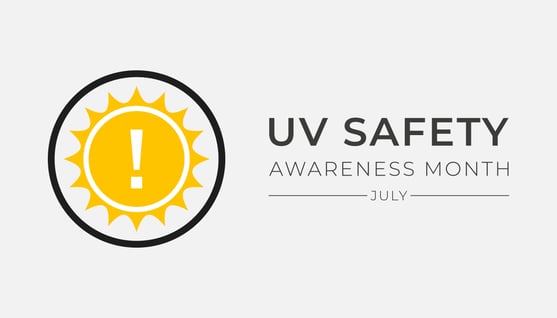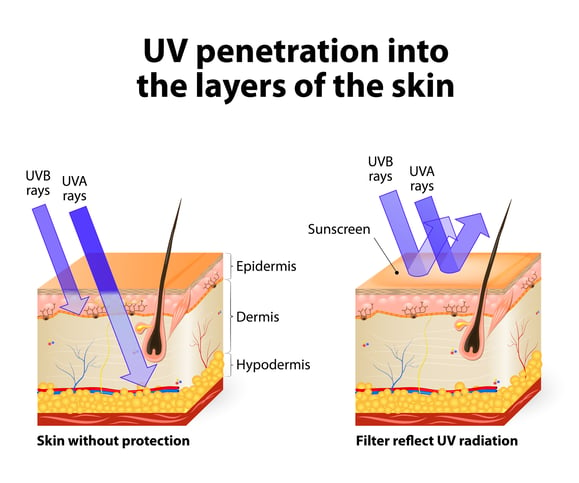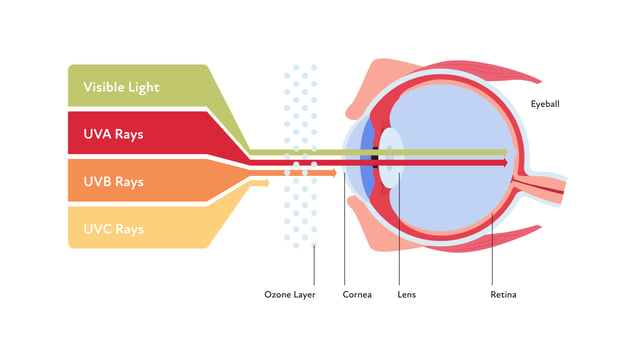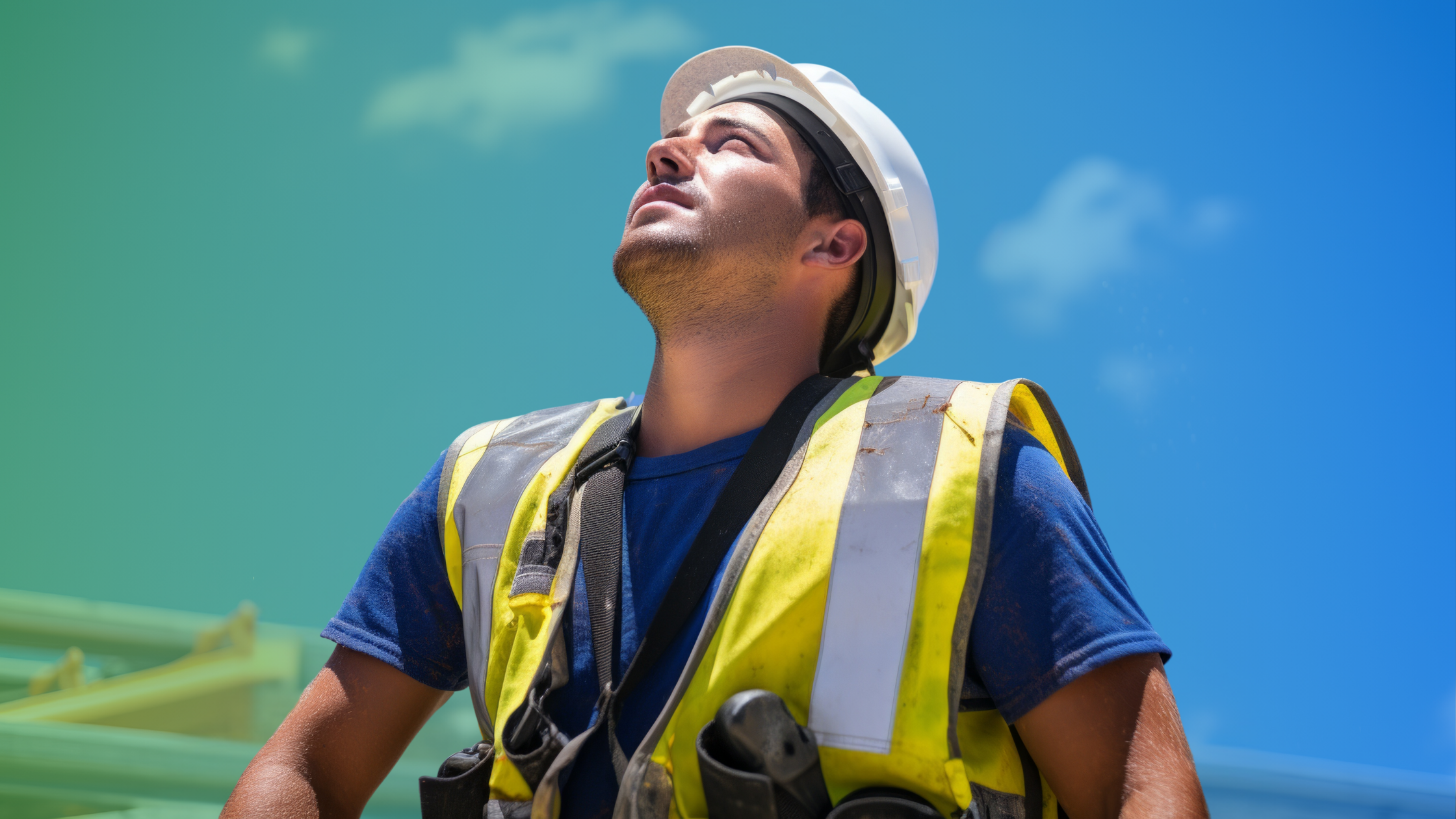While the sun is usually our friend, it can also be harmful to us. Prolonged exposure to the sun’s ultraviolet (UV) rays can lead to skin cancer. There are also short-term health hazards that can be brought about by being exposed to the sun and warm temperatures.
Obviously, anybody doing anything outside recreationally during the summer months should take precautions to protect them from the sun. However, UV Safety Awareness Month also provides a good opportunity for any company that has employees working outside to reach employees about how to protect themselves when working outside. Granted, this shouldn’t be the only time of year that this aspect of workplace safety is discussed. But UV Safety Awareness Month provides a good excuse to give UV safety the attention it deserves. Let’s take a look at what employers can do and the lessons they should be teaching workers about UV safety.

Three Types of Rays
The first thing people need to learn during UV Safety Awareness month is that there are three types of UV rays. The first type is UVA rays, which have the least amount of energy among various types of UV rays. UVA rays have been shown to cause indirect damage to the DNA of cells, causing them to age. There is some evidence suggesting that UVA rays play a role in certain forms of skin cancer. However, these rays are mostly linked with long-term effects on the skin like wrinkles.
The next type is UVB rays, which have a little more energy than UVA rays. Whereas UVA rays cause indirect damage to skin cells, the more powerful UVB rays cause direct damage to the DNA of skin cells. These are the rays that are most closely associated with sunburn. They can also play a role in causing certain skin cancers.
Finally, there are UVC rays, which are more powerful and have more energy than UVA and UVB rays. The good news is that they don’t play a role in causing skin cancer because UVC rays react with the ozone and never make it to the surface. However, some man-made items emit UVC rays, including sanitizing bulbs, welding torches, and mercury lamps. The bottom line is that all types of UV rays can potentially cause damage to the skin, whether it be wrinkles, other signs of aging, or skin cancer, so everybody must understand the potential risks.
Health Issues Caused by UV Exposures
Needless to say, skin cancer is the most serious risk of exposure to UV rays. While there are other factors at play, the people with the most exposure to UV rays are typically the most vulnerable to skin cancer. Likewise, sunburn is a short-term risk of excessive UV exposure, causing the skin to look red and become more sensitive. There are also several signs of premature aging linked to exposure to UV exposure, including wrinkles, liver spots, leathery skin, and actinic keratosis.
Beyond skin issues, there is also a link between eye disease and UV exposure. Extended exposure can cause burning or inflammation in the cornea. UV rays can also impair someone’s version thanks to pterygium or cataracts. Even beyond eyes and skin, UV rays can weaken a person’s immune system. This means vaccines could be less effective and the body could struggle to fight off illnesses and infections. Therefore, long-term skin issues are not the only threat brought about by extended UV exposure that people should be worried about.

Limiting Exposure
Naturally, the best advice employers can pass on to employees during UV Awareness Month is how to limit their exposure to UV rays. This starts by recognizing that UV rays are most powerful from 10 in the morning until four in the afternoon. Of course, these are peak hours for most workers, so extra precautions must be taken if working outside during these hours is unavoidable.
For starters, try to cover as much of your skin as possible. This involves wearing long pants and long sleeves to cover your arms and legs. Meanwhile, a hat and sunglasses will help to protect your head, face, and neck from direct exposure to UV rays. For skin that remains exposed, especially if it’s too hot to wear long pants and sleeves, wearing sunscreen is essential. Of course, it’s always best to spend time in the shade whenever possible.
Also, just because you’re outside before 10 in the morning or after 4 in the afternoon doesn’t mean you’re out of the woods. Even if it’s not peak hours for UV rays, you will still be exposed. Therefore, wearing proper clothing and using sunscreen are still important. It’s just far more important between 10 and 4 when the UV rays are most direct.
Factors Affecting Exposure
All UV exposure isn’t created equal. It’s sometimes more serious and requires more protection than at other times. As mentioned, the middle of the day between 10 in the morning and 4 in the afternoon is when the UV rays are strongest. Naturally, the spring and summer months come with stronger UV rays than the winter. However, the closer you are to the equator, the less important the season because UV rays will likely be strong all year.
Other weather factors, especially cloud cover can also play a role in the threat of UV exposure. Cloudy days will come with a less serious threat of UV exposure, which is why staying in shaded areas is always a good idea. The altitude of your location is also relevant because more UV rays will reach people at higher elevations. Finally, don’t forget that UV rays can reflect off various and pose a threat to people. It’s common for rays to bounce off water and snow, but it also happens with pavement or even sand, so be aware of the surfaces around you because they will factor into UV exposure.
Assess UV Workplace Risk
During UV Safety Awareness Month, employers should be sharing the risks of UV exposure with employees while also educating them on how to reduce their exposure. At the same time, companies should also spend time assessing the risk of UV exposure in the workplace. Needless to say, this is essential for companies that require employees to work outside. But all companies should take a little time during UV Safety Awareness Month to conduct an assessment.
Keep in mind that there could be some indoor workspaces where employees could be exposed to UV rays. These workspaces may need to be redesigned or given window coverings with materials that can block UV rays. For outdoor workers, employers may have to consider changing the hours that employees work to avoid the middle of the day when UV rays are strongest. They can also find ways to get employees more time in the shade or create artificial shade that can help reduce exposure to UV rays. Even if it’s not possible to reduce UV exposure significantly, a risk assessment should still be conducted so that employees understand the safety risks.
Create a Policy
Following a UV safety assessment, employers should work to create a safety policy to follow regarding UV protection. For instance, should employees be required to wear certain clothing during peak UV hours to protect them? Should sunscreen be required for outside workers? Is there a way to provide breaks in shaded areas for outside workers? At what point is the risk of UV exposure too great for employees to keep working?
These are all important questions to consider when creating a UV safety policy. Keep in mind that not all of the negative effects of UV exposure are long-term health issues. Therefore, workers deserve to be protected with a formal policy. The simple act of creating a UV safety policy will send a message to employees that their health and well-being are valued by the company.

Workplace Health Workshop
Perhaps the best thing any workplace can do during UV Safety Awareness Month is to hold a formal health workshop for employees. Experts can be invited into the workplace to educate workers about the dangers of UV rays, how they can protect themselves, and how to recognize the effects of sun-related health issues. This is also a good time to encourage employees to get screened by a dermatologist for signs of skin cancer and other sun-related diseases. Employers may even want to make someone available during work hours to ensure every employee has access to a checkup.
Of course, company leaders and HR managers will also play a role in any health workshop. They can share the company’s policies and procedures when it comes to protecting workers from UV rays. They will share what clothing and equipment can be used by employees to stay protected from UV rays and any safety requirements the company is implementing. The most important thing to keep in mind during UV Safety Awareness Month is education, which is why a formal health workshop centered around UV safety education is a good idea for any workplace.

